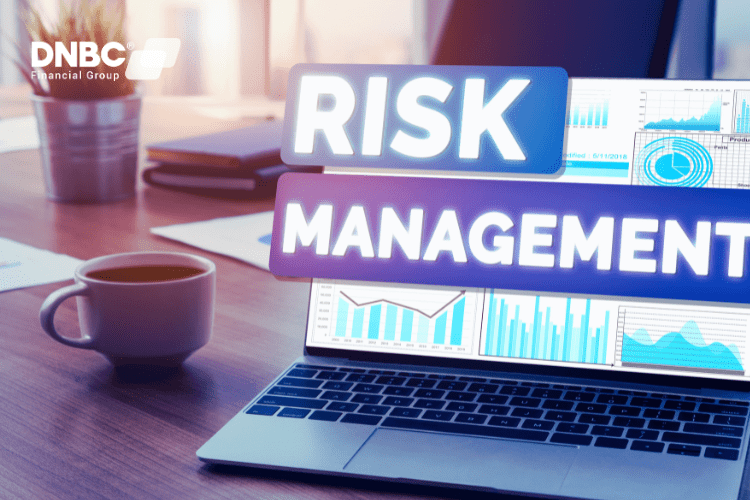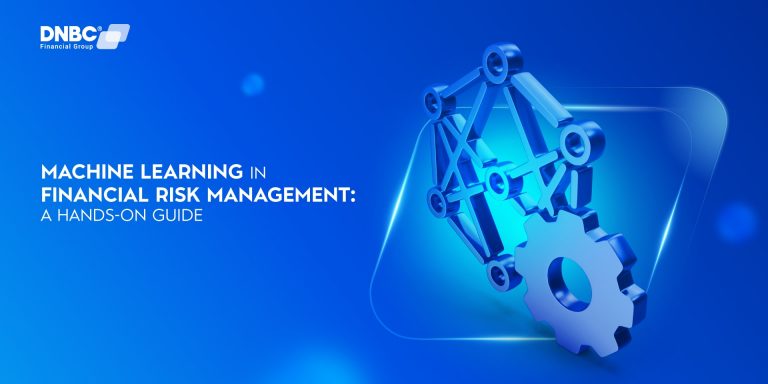In today’s fast-paced financial world, managing risk effectively is crucial for businesses and institutions. While effective, traditional risk management methods often struggle to keep up with the dynamic nature of financial markets. This is where machine learning in financial risk management comes into play, offering innovative solutions for predicting, mitigating, and managing risks.
Machine learning leverages data-driven models to analyze patterns, detect anomalies, and improve decision-making. Python, a leading programming language in data science and finance, provides a robust ecosystem for implementing machine learning algorithms in risk management. This hands-on guide will explore how machine learning for financial risk management with Python can be applied, walking you through a step-by-step implementation.
Why Use Machine Learning in Financial Risk Management?
Traditional financial risk management methods often rely on manual processes, which can be slow and susceptible to human bias. These approaches typically utilize static models, such as linear regression, that may not adapt well to modern financial markets’ dynamic and complex nature. Consequently, they might fail to detect emerging threats promptly.
In contrast, machine learning offers significant advantages in financial risk management. By analyzing vast datasets, machine learning algorithms can detect fraud and economic risks in real-time, enhancing the speed and accuracy of risk detection. Predictive modeling capabilities allow for more precise risk assessments, surpassing the limitations of traditional methods. Risk classification, credit scoring, and fraud detection automation also increase operational efficiency and reduce costs.
Key applications of machine learning in finance include credit risk assessment, where historical data is used to evaluate borrower creditworthiness; market risk prediction, involving the analysis of stock price fluctuations, interest rates, and portfolio risks; and fraud detection, which employs anomaly detection techniques to identify suspicious transactions.
By integrating machine learning into financial risk management, institutions can enhance their ability to anticipate and mitigate risks, leading to more robust and responsive financial systems.

Key Machine Learning Techniques for Financial Risk Management
In financial risk management, several machine learning techniques have emerged as pivotal tools for analyzing complex data and enhancing predictive accuracy.
Logistic Regression is a fundamental statistical method employed to model the probability of a binary outcome, making it particularly useful for credit scoring and fraud detection. By analyzing historical data, logistic regression helps classify financial transactions or loan applicants as high-risk or low-risk, aiding institutions in making informed decisions.
Decision Trees and Random Forests are versatile algorithms that handle classification and regression tasks. Decision trees split data into branches to arrive at decisions, while random forests enhance this approach by constructing multiple trees and aggregating their outcomes. This ensemble method improves predictive performance and is widely used in fraud detection and risk assessment.
Neural Networks and Deep Learning have revolutionized the field by enabling the modeling of intricate patterns within large datasets. These techniques are adept at capturing non-linear relationships, making them invaluable for predicting financial crises and identifying fraudulent activities. With their multiple layers, deep learning models can process vast amounts of unstructured data, such as transaction records and market indicators, to detect subtle anomalies indicative of potential risks.
Integrating these machine learning techniques into financial risk management allows institutions to process complex datasets more effectively, improving risk assessment and decision-making processes.

Hands-On: Implementing Machine Learning for Financial Risk Management with Python
Implementing machine learning in financial risk management involves several key steps that enhance the accuracy and efficiency of risk assessment processes.
- Setting Up the Environment
Begin by establishing a suitable environment equipped with the necessary tools and libraries. Python is widely used in the financial industry due to its extensive range of data analysis and machine learning libraries. Ensuring your environment is configured correctly is essential for seamless data handling and model development.
- Data Collection and Preprocessing
The foundation of any machine learning model is high-quality data. In the context of financial risk management, this involves gathering relevant financial datasets, such as credit histories, market trends, and transaction records. Once collected, the data must be meticulously cleaned and preprocessed to address missing values and inconsistencies. This step ensures that the data is accurate and suitable for analysis.
- Selecting and Training a Machine Learning Model
With prepared data, the next phase is to choose an appropriate machine learning algorithm that aligns with the specific risk assessment objectives. Commonly used models include logistic regression for binary classification tasks, decision trees for hierarchical decision-making, and neural networks for capturing complex patterns in data. Training the selected model involves feeding it the preprocessed data to learn and identify patterns associated with financial risks.
- Evaluating Model Performance
After training, assessing the model’s performance is crucial to ensure its predictions are reliable. This evaluation is typically conducted using a separate subset of data that was not used during training. Key performance metrics, such as accuracy, precision, recall, and the area under the receiver operating characteristic (ROC) curve, provide insights into how well the model distinguishes between different risk levels.
- Deployment and Risk Prediction
Once validated, the model can be deployed into a production environment to analyze new, incoming data in real time. This enables the system to provide timely risk assessments, facilitating proactive decision-making. For instance, in a banking scenario, the model could evaluate the risk level of loan applications as they are submitted, aiding in swift and informed lending decisions.
By systematically following these steps, financial institutions can harness the power of machine learning to enhance their risk management strategies, leading to more accurate predictions and efficient operations.

Challenges and Considerations in Machine Learning for Financial Risk Management
While machine learning offers transformative potential in financial risk management, its implementation presents several challenges and considerations.
- Data Quality and Privacy
The effectiveness of machine learning models heavily depends on the quality of data. Financial data is often vast and complex, and poor data quality can significantly reduce the accuracy of predictions. Additionally, handling sensitive financial information necessitates stringent data privacy measures to protect against breaches and ensure compliance with regulations.
- Model Interpretability
Many machine learning models, especially complex ones, operate as “black boxes,” offering little insight into their internal decision-making processes. This opacity can be problematic in finance, where understanding the rationale behind risk assessments is crucial for compliance and trust.
- Regulatory Compliance
Financial institutions must navigate a landscape of strict regulations. Using machine learning models adds complexity, as these models must adhere to existing laws and guidelines, which may not have been designed with such technologies in mind. Ensuring that AI-driven processes comply with regulatory standards is a significant consideration.
- Overfitting and Generalization
Machine learning models may become too tailored to historical data, a phenomenon known as overfitting. This can result in poor performance when applied to new, unseen data. Balancing the model’s complexity to generalize well across various scenarios is essential for reliable risk assessment.
- Cybersecurity Risks
Machine learning models rely on extensive data to become targets for cyber attacks. Ensuring robust cybersecurity measures are in place is vital to protect both the data and the integrity of the models.
Addressing these challenges requires a multidisciplinary approach, combining expertise in finance, data science, legal frameworks, and cybersecurity to effectively implement machine learning in financial risk management.
Future Trends: The Role of AI in Financial Risk Management
Integrating Artificial Intelligence (AI) into financial risk management is poised to revolutionize the industry, introducing advanced methods for identifying, assessing, and mitigating risks. Several emerging trends highlight the evolving role of AI in this sector.
- AI-Powered Explainable Risk Models
The need for transparency and interpretability in risk assessments has grown as AI systems become more complex. Future AI applications will focus on creating explainable models that allow financial institutions to understand the rationale behind AI-driven decisions. This emphasis on Explainable AI (XAI) enhances trust and ensures compliance with regulatory standards.
- Integration of AI with Blockchain Technology
The convergence of AI and blockchain is set to transform financial risk management. AI can analyze vast amounts of data to detect fraudulent activities, while blockchain provides a secure and transparent transaction ledger. This combination enhances the accuracy of risk assessments and ensures the integrity of financial data.
- AI-Driven Predictive Analytics
AI’s ability to process and analyze large datasets enables predictive analytics that forecast potential financial risks before they materialize. By evaluating macroeconomic indicators and market trends, AI systems can provide early warnings, allowing institutions to take proactive measures to mitigate risks.
- Enhanced Fraud Detection
AI enhances fraud detection by swiftly analyzing complex data to predict and identify potential risks. It ensures companies can preemptively address threats, improving decision-making and resource allocation.
- Personalized Financial Services
AI enables the development of personalized financial services tailored to individual customer needs. AI can offer customized investment portfolios and financial advice by analyzing user behavior and preferences, enhancing customer satisfaction and loyalty.
These trends underscore AI’s transformative potential in financial risk management, offering tools that enhance industry efficiency, accuracy, and personalization.
Conclusion
In today’s rapidly evolving financial landscape, the integration of machine learning into risk management has become indispensable. Institutions can develop sophisticated models to effectively predict and mitigate potential risks by leveraging Python’s robust capabilities.
At DNBC Financial Group, we recognize the transformative power of such technologies. Our commitment to innovation ensures that personal and business clients benefit from enhanced security and efficiency in their financial transactions. Whether managing international transfers or seeking personalized financial services, our solutions are designed to meet your unique needs.
For businesses, our services facilitate seamless international transfers, enabling operations across borders with ease. Individuals can use our personalized services, ensuring that every transaction aligns with their financial goals. By embracing machine learning and Python-driven solutions, DNBC Financial Group is at the forefront of delivering cutting-edge financial services prioritizing security and user experience.
As we continue integrating advanced technologies into our offerings, clients can trust DNBC Financial Group to provide reliable, efficient, and secure financial solutions tailored to their specific requirements.
DNBC Financial Group is your trusted provider in international money transfer
- Get 100% free 1-on-1 support
- 100% free account opening
- Seamless onboarding process
Or please contact DNBC
![]() Email: [email protected]
Email: [email protected]
![]() Phone Number:
Phone Number:
- +65 6572 8885 (Office)
- +1 604 227 7007 (Hotline Canada)
- +65 8442 3474 (WhatsApp)



 DNBC Team
DNBC Team






